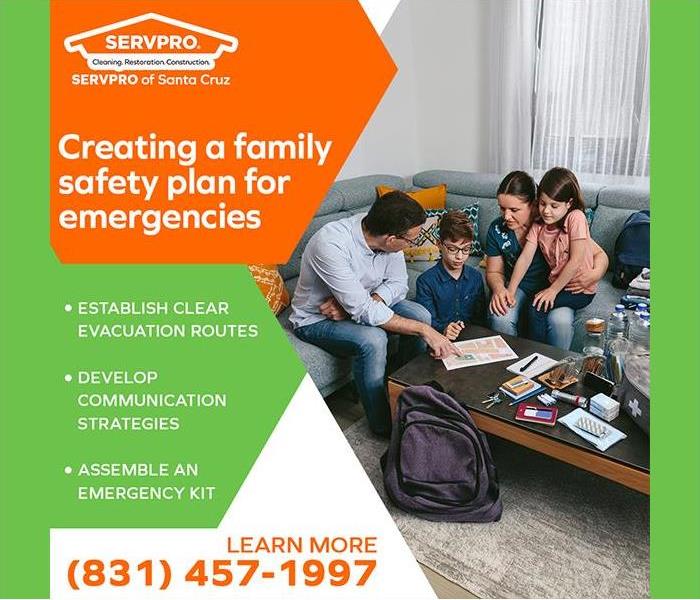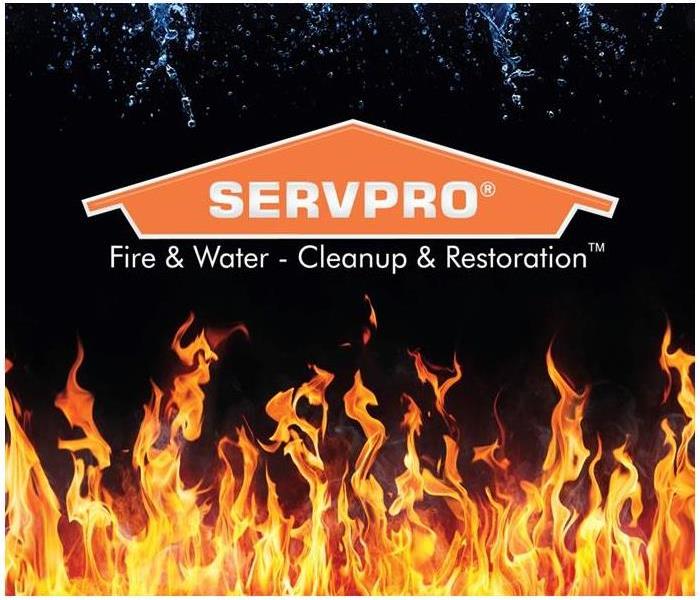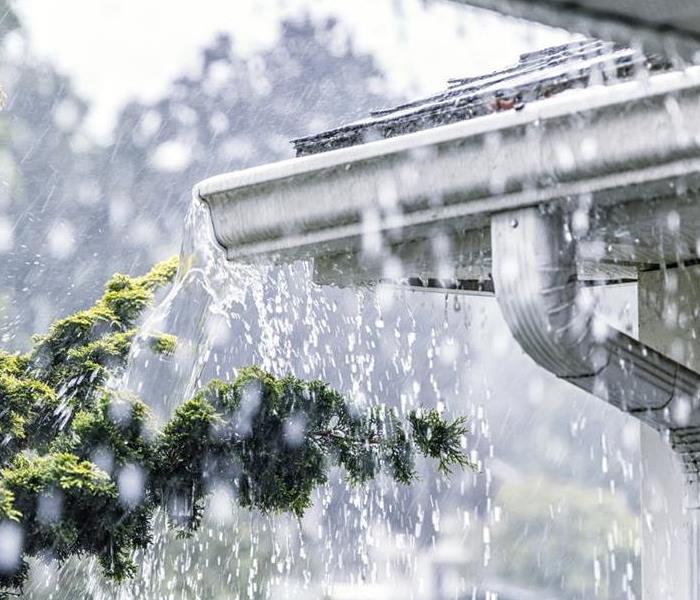Tips on staying safe after a storm has passed
8/14/2024 (Permalink)
Key takeaways
- Safety First: Understand the essential steps to protect yourself and your property after a storm.
- Flood Restoration Services: Learn how professional flood restoration services can help mitigate water damage in Paradise Park.
- Stay Informed: Discover ways to stay updated with local news and alerts for continued safety.
- Health Precautions: Recognize the importance of hygiene and health precautions in the aftermath of a storm.
After a storm has passed, the dangers are not over, and there are still significant risks to consider. At SERVPRO of Santa Cruz, we understand the importance of staying vigilant and taking the right steps to ensure your safety and the safety of your property. Storms can leave behind extensive water damage in Paradise Park, and it’s essential to know how to navigate the aftermath safely. From hidden hazards to potential health risks, the post-storm period demands careful attention and prompt action.
Our extensive guide offers essential tips on staying safe and minimizing risks once the storm has cleared, covering key areas of concern and practical steps to take. Whether it’s understanding the importance of professional water damage restoration in Paradise Park or recognizing the signs of structural damage, our guide covers all aspects of post-storm recovery. With the experience of flood restoration services in Paradise Park, you can restore your home to its original state and mitigate further damage.
Your safety is our priority, and we are here to provide the knowledge and support you need during this challenging time. Read on to learn more about ensuring safety and protecting your property in the wake of a storm.
Assessing the situation
After a storm, it’s crucial to assess your surroundings and evaluate the extent of any damage. Understanding the situation helps you prioritize actions to safeguard your family and home. In this section, we’ll explore essential tips and strategies to effectively assess the situation after a storm has passed.
Check for immediate hazards
- Inspect for structural damage: Examine your home for visible signs of damage, such as cracks in walls, ceilings, or foundations, to determine any immediate safety concerns. Look for any signs of instability that could pose a risk to your safety.
- Avoid downed power lines: Be cautious of fallen power lines near your home, as they can be extremely dangerous. Maintain a safe distance and report them to the local utility company immediately.
- Watch for gas leaks: If you smell gas or hear a hissing sound, it could indicate a gas leak and immediate action is necessary. Evacuate the area immediately and contact the gas company or emergency services for assistance.
- Beware of flooded areas: Floodwaters can contain hazardous debris and bacteria, making them dangerous to walk or drive through. Avoid walking or driving through flooded areas to minimize injury or contamination.
- Examine trees and debris: Check for broken branches or uprooted trees that may have fallen on your property. Remove debris cautiously to avoid injury or damage to your home.
- Inspect electrical systems: Before turning on any electrical appliances, ensure that your electrical system has not been compromised, as this could pose serious risks. If necessary, have a professional inspect your home’s electrical wiring for safety.
Stay updated with local alerts
- Monitor weather updates: Use reliable sources like weather apps, news websites, or local radio stations to receive timely weather updates and storm warnings.
- Follow community announcements: Pay attention to announcements from local authorities about safety measures, road closures, and emergency services in your area.
- Sign up for emergency alerts: Many communities offer emergency alert services that can send notifications directly to your phone. Signing up for these alerts will keep you informed about ongoing threats.
- Utilize social media: Follow local emergency management agencies and news outlets on social media platforms for real-time updates and community information.
- Check for evacuation notices: Stay informed about any evacuation orders in your area. If an evacuation is necessary, follow the instructions carefully and have a plan in place.
- Use reliable apps: Download apps like FEMA or the Red Cross to receive disaster alerts, safety tips, and resources to help you stay safe and prepared during and after a storm.
Ensuring personal safety
After a storm, prioritizing personal safety is crucial due to the many risks in the chaotic environment that follows severe weather. To ensure safety, it's essential to avoid dangerous areas, have emergency supplies on hand, and know how to react to potential threats. SERVPRO of Santa Cruz emphasizes the importance of being prepared and aware, enabling you to navigate the post-storm landscape confidently and securely. Following the right safety protocols allows you to protect your well-being and focus on recovery and restoration.
Avoid flooded areas
- Stay informed: Keep track of weather forecasts and warnings to know which areas are at risk of flooding.
- Plan your route: Before heading out, check for road closures and potential flooded areas along your route to avoid hazardous conditions.
- Avoid low-lying areas: Areas near rivers, streams, and ponds are more prone to flooding, so steer clear of these locations during heavy rainfall.
- Use alternative routes: If your usual route is flooded, find an alternative way to reach your destination to avoid getting stuck in high water.
- Be cautious at night: Flooding can be harder to spot in the dark, so be extra vigilant when driving or walking in low-visibility conditions.
- Avoid crossing flooded roads: It only takes a few inches of water to sweep away a vehicle, so never drive through flooded roads; instead, turn around and find another way.
Emergency supplies
- Water: Stock up on at least one gallon of water per person per day for at least three days to ensure you have enough water for hydration and basic needs during a storm or disaster.
- Non-perishable food: Make sure to have enough food that doesn't require refrigeration or cooking, such as canned goods, granola bars, and dried fruits, and remember to keep a manual can opener.
- Flashlights and batteries: Keep several flashlights in your emergency kit along with extra batteries. During power outages, these will be essential for providing light and visibility.
- First aid kit: Be prepared with a fully stocked first aid kit, including bandages, sterile gauze pads, antiseptic wipes, adhesive tape, and pain relievers. You never know when you may need it during a storm.
- Blankets and warm clothing: In case of a prolonged power outage or loss of heat, have blankets and warm clothing on hand to stay comfortable and avoid hypothermia during cold weather.
- Emergency contact list: Keep a list of important phone numbers, including family members, doctors, and local emergency services. In case of separation or communication difficulties, having these numbers readily available can be a lifesaver.
Handling water damage in Paradise Park
Water damage is a common problem for Paradise Park homeowners after a storm. Whether it's due to flooding, leaks from the roof, or broken pipes, water can cause serious harm to your property if not dealt with quickly. Acting fast and managing the situation effectively is key to minimizing damage. At SERVPRO of Santa Cruz, we understand the urgency and complexity of water damage restoration. By following specific steps and using professional services, you can minimize further deterioration and protect your home from mold and structural damage. This section provides practical advice on dealing with water damage, ensuring your property is efficiently and effectively restored to its original condition.
Initial steps for water damage control
- Turn off utilities: Immediately shut off electricity and gas to avoid electrical shocks and gas leaks. If you cannot safely access the utility controls, contact the utility company for assistance.
- Remove standing water: Start by using buckets, mops, or a wet/dry vacuum to clear out any standing water from your property. This is an important step to minimize additional damage and lower the chances of mold developing.
- Ventilate the area: Open windows and doors to increase air circulation and speed up the drying process. Use fans and dehumidifiers to help remove moisture from the air and surfaces.
- Move personal belongings: Remove electronics, furniture, and valuable items from affected areas to mitigate further damage. Prioritize items that are sensitive to water, such as documents and electronics.
- Document the damage: Take photos and videos of the water damage for insurance purposes. Detailed documentation will help support your claims and facilitate a smoother insurance process.
- Inspect for hidden water: Check for water in hidden areas, such as behind walls, under floors, and in crawl spaces. Undetected water can lead to mold and structural issues if not addressed promptly.
- Clean and disinfect: Cleaning up debris and using disinfectants in affected areas is essential for eliminating bacteria and mitigating mold growth. This process is crucial for keeping the environment safe and healthy.
Why choose professional water damage restoration services
- Experience: Professional water damage restoration services, like SERVPRO of Santa Cruz, bring specialized knowledge and experience to handle complex water damage situations effectively.
- Advanced equipment: Professionals use state-of-the-art equipment for water extraction, drying, and dehumidification, ensuring a thorough and efficient restoration process.
- Thorough assessment: Restoration professionals conduct a detailed assessment of your property to identify the extent of the damage and develop a tailored restoration plan.
- Mold mitigation: Professionals take proactive steps to mitigate mold growth, protecting your property and health from the harmful effects of mold exposure.
- Quick response time: Fast action is crucial in minimizing water damage. Professional services offer quick response times, reducing the risk of further damage and speeding up the recovery process.
- Insurance assistance: Experienced restoration companies assist with the insurance claims process, providing documentation and communication with your insurance provider to ensure a smoother and quicker claims process.
Flood restoration services in Paradise Park
In Paradise Park, we provide extensive flood cleanup services for quick and efficient recovery. Our water damage restoration professionals restore your home to its pre-flood condition, ensuring peace of mind during challenging times.
Extensive flood damage restoration
- Assessment and inspection: Our restoration professionals will assess the extent of the flood damage, examining structural components and affected areas to provide a detailed plan for restoration. This thorough assessment allows us to identify hidden issues and ensure a comprehensive approach to remediation.
- Water extraction and drying: We use state-of-the-art equipment to extract standing water and thoroughly dry affected areas efficiently. Our advanced drying techniques minimize further water damage and help restore your property quickly.
- Structural repairs: After the initial cleanup, we address any structural damage, including repairing walls, floors, and foundations. Our restoration process ensures your property is safe and structurally sound.
- Content restoration: Our team also focuses on salvaging and restoring personal belongings affected by the flood. We use specialized cleaning techniques to recover valuable items and minimize losses.
- Odor removal: Flooding can lead to unpleasant odors due to mold, mildew, and water damage. We utilize deodorization techniques to eliminate these odors, ensuring your home smells fresh and clean.
- Comprehensive cleaning and sanitation: To safeguard your health, we conduct a thorough cleaning and sanitization process, removing contaminants and ensuring a hygienic environment.
Mitigating mold and mildew
- Thorough drying: Ensuring that all areas of your property are completely dry is vital in mitigating mold. We utilize industrial-grade dehumidifiers and air movers to expedite the drying process and mitigate mold spores from settling.
- Mold inspections: Our professionals conduct detailed mold inspections to identify any potential growth areas. Early detection is key to mitigating widespread mold problems.
- Use of antimicrobial treatments: To inhibit mold growth, we apply antimicrobial treatments to surfaces that have been exposed to moisture. This proactive step reduces the risk of mold colonization.
- Ventilation and airflow: Improving ventilation and airflow in your home can significantly reduce humidity levels, which is essential for mold mitigation. We advise on the best practices for maintaining optimal indoor air quality.
- Regular monitoring: Continuous monitoring of moisture levels ensures that any hidden dampness is addressed promptly. Our team will provide you with the tools and knowledge needed to keep your property mold-free in the long term.
Hygiene precautions
After a storm, maintaining proper hygiene is crucial to protect your health and well-being. Floodwaters can bring a host of contaminants into your home, including bacteria, viruses, and hazardous chemicals. Prioritizing cleanliness and sanitation helps minimize illness and creates a safe environment for you and your family. At SERVPRO of Santa Cruz, we emphasize the importance of taking proactive measures to ensure that your home is free from harmful pathogens. By following essential hygiene precautions, you can minimize health risks and maintain a clean, safe living space as you recover from the effects of a storm.
Clean water and sanitation
- Boiling water advisory: Follow any local advisories to boil water before drinking or using it for cooking to ensure it is safe and free from harmful contaminants. Boiling water kills bacteria, viruses, and parasites, ensuring that it's safe for consumption.
- Use bottled water: Use bottled water for drinking, cooking, and brushing your teeth until you're certain your water supply is safe to minimize exposure to potential contaminants.
- Sanitize surfaces: Clean all surfaces that have come into contact with floodwaters using disinfectants to eliminate harmful pathogens and ensure a hygienic environment. Pay special attention to kitchen countertops, bathrooms, and any area where food is prepared or consumed.
- Check plumbing systems: Inspect your plumbing systems for any leaks or contamination. Ensure that your septic tank and sewage lines are functioning properly to minimize additional hazards.
- Safe disposal of waste: Dispose of waste materials and debris according to local regulations. Improper disposal can lead to further contamination and health risks.
Dealing with contaminated items
- Identify contaminated items: Assess which items have been exposed to floodwaters. Porous materials like carpets, upholstered furniture, and mattresses are likely to be contaminated and may need to be discarded.
- Clean salvageable items: For items that can be salvaged, use a bleach solution or a professional-grade disinfectant to thoroughly clean and sanitize. This step is crucial to removing bacteria and mitigating mold growth.
- Proper disposal: Safely get rid of items that can't be saved. Make sure to follow local rules for disposing of hazardous waste to protect the environment.
- Protective gear: Wear protective gear, such as gloves and masks, when handling contaminated items to reduce the risk of exposure to harmful substances. This precaution reduces the risk of exposure to harmful substances.
- Electronics and appliances: Avoid using electronics and appliances that have come into contact with water until a professional has inspected them. Water can cause electrical damage and pose a safety hazard.
Documenting damage for insurance claims
- Take detailed photographs and videos: Capture clear and comprehensive images and videos of all damaged areas, including close-ups of structural damage, furniture, appliances, and personal belongings. This visual evidence is crucial for substantiating your insurance claim.
- Create a detailed inventory: Make a list of all damaged items, including descriptions, purchase dates, and estimated values. Include receipts or proof of purchase, if available, to support your claim.
- Note: Any temporary repairs: Document any temporary repairs made to minimize further damage, such as boarding up windows or placing tarps on the roof. Keep all receipts related to these repairs, as they may be reimbursable.
- Keep a record of communications: Maintain a log of all communications with your insurance company, including phone calls, emails, and in-person meetings. Record the date, time, and content of each interaction to ensure transparency throughout the claims process.
- Consult a professional: Consider working with a professional restoration service like SERVPRO of Santa Cruz; we can provide professional assessments and help document the damage accurately. Our experience can be invaluable in maximizing your insurance claim.
Choose SERVPRO of Santa Cruz for water damage today
Recovering from a storm requires careful planning and professional assistance. At SERVPRO of Santa Cruz, we are committed to helping our community recover safely and efficiently with our professional flood restoration services. Our flood restoration professionals are equipped with the knowledge and tools to address any storm-related challenges. They provide emergency flood restoration services to ensure your home is restored to its pre-storm condition. Let us handle the complexities of water damage restoration so you can focus on rebuilding your life and returning to normal. Contact SERVPRO of Santa Cruz today at (831) 457-1997 for peace of mind and professional support.

 24/7 Emergency Service
24/7 Emergency Service





